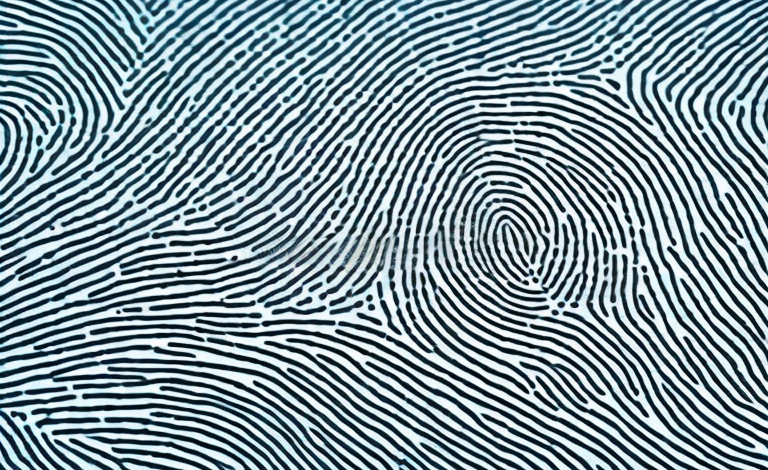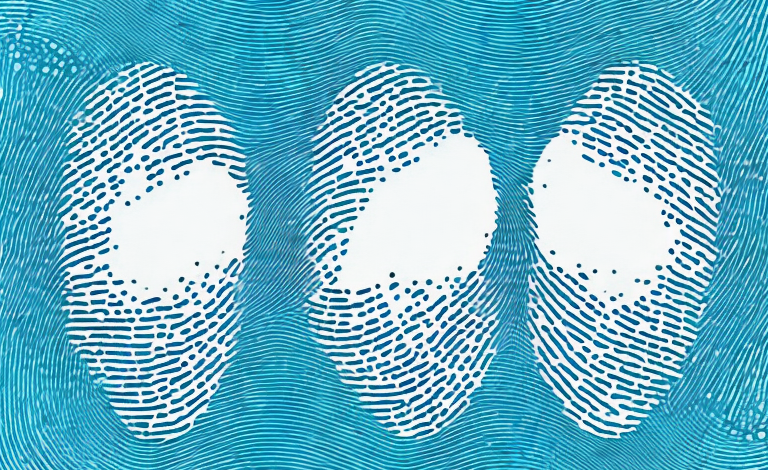Fingerprints are unique to each individual, making them one of the most reliable forms of identification. But can there be two people with the same fingerprint? In this article, we will explore the science behind our unique fingerprints, how they are formed, and their use in various areas, including law enforcement and forensic investigations.
The Science Behind Our Unique Fingerprints
Our fingerprints are formed by the ridges on our fingers, which are made up of tiny raised lines and furrows. These patterns are formed in the womb and are influenced by genetics and other factors. The ridges on our fingers are unique, and no two people have exactly the same pattern. The patterns on fingerprints are so unique that they have a one in 64 billion chance of matching with someone else.
Forensic scientists use fingerprints to identify suspects in criminal investigations. They can compare fingerprints found at a crime scene with those in a database to determine if they match. This process is called fingerprint analysis and has been used for over a century to solve crimes.
Fingerprints are not only unique to humans but also to some animals, such as koalas and chimpanzees. However, the patterns on their fingers are different from those on human fingers. Scientists are still studying the purpose of fingerprints in humans, but some theories suggest that they help us grip objects better and improve our sense of touch.
How fingerprints are formed in the womb
During fetal development, between the 10th and 16th week of gestation, the skin on our fingers and toes forms into ridges, spirals, and loops. These patterns are influenced by several factors, including genetics, the movement of the fetus, and the tension in the growing skin. The different patterns and ridges that form eventually become our unique fingerprints.
Interestingly, fingerprints are not only unique to humans but also to other primates, such as gorillas and chimpanzees. However, the patterns and ridges on their fingers and toes are different from ours. In fact, even identical twins have different fingerprints because the formation of these patterns is influenced by various factors during fetal development, which cannot be replicated exactly in two different fetuses.
Understanding the three main fingerprint patterns
There are three main fingerprint patterns – loops, arches, and whorls. Loops make up about 60% of all fingerprints and have one delta, or ridge line that splits and forks. Arches make up about 5% and have no deltas, while whorls make up the remaining 35% and have two or more deltas. These patterns can be used to identify individuals and are important in forensic investigations.
It is important to note that fingerprints are unique to each individual and do not change over time. This makes them a valuable tool in criminal investigations and can help to link suspects to crime scenes. In addition to their use in forensics, fingerprints are also used for security purposes, such as in biometric identification systems for access control.
The role of genetics in determining fingerprint uniqueness
Genetics play a significant role in determining our unique fingerprints. Research has shown that identical twins have very similar fingerprints, but they are not identical. Twins may have the same patterns, but the ridges and minutiae on the fingerprints will still be different, which makes each fingerprint unique. People from the same family may have similar fingerprints because of their genetic makeup, but they will still have unique patterns.
While genetics play a major role in determining fingerprint uniqueness, environmental factors can also influence the formation of fingerprints. For example, the pressure and position of a fetus in the womb can affect the development of their fingerprints. Additionally, injuries or scars on the fingers can alter the ridges and patterns of a fingerprint, making it even more unique.
Fingerprints have been used for identification purposes for over a century, and advancements in technology have made it easier to analyze and compare fingerprints. However, there is still ongoing research to better understand the genetic and environmental factors that contribute to fingerprint formation and uniqueness. This knowledge can be useful in forensic investigations and other fields where fingerprint analysis is important.
The potential for identical twins to have the same fingerprints
Identical twins share the same DNA and are often thought to have identical fingerprints. While their fingerprints may be similar, they are not identical. The patterns on their fingerprints can differ in terms of the ridges, whorls, and minutiae. Identical twins can, however, be used to help identify suspects in criminal investigations, as their fingerprints are often similar enough to implicate a suspect.
It is important to note that fingerprints are not the only biometric identifier that can be used to distinguish between identical twins. Other biometric identifiers, such as facial recognition and iris scans, can be used to differentiate between twins. However, these methods are not foolproof and can also have errors. Therefore, it is important to use multiple forms of identification when dealing with identical twins in criminal investigations or other situations where identification is crucial.
The rarity of two people having identical fingerprints
The chances of two people having identical fingerprints are extremely rare. In fact, there has never been a documented case of two people having the same fingerprints. The likelihood of two people having the same patterns is one in 64 billion, making fingerprints one of the most reliable forms of identification today.
Each person’s fingerprints are unique due to a combination of genetic and environmental factors. The ridges and patterns on our fingertips are formed during fetal development and remain unchanged throughout our lives. Even identical twins, who share the same DNA, have different fingerprints. However, certain medical conditions such as eczema or burns can alter the appearance of fingerprints, making them difficult to read. In such cases, other forms of identification may be necessary.
How fingerprint analysis is used in law enforcement and forensics
Fingerprint analysis is a crucial tool in law enforcement and forensic investigations. Fingerprints are unique, and this uniqueness makes them important in identifying suspects, linking crime scenes, and solving cases. Fingerprint analysis involves collecting, comparing, and analyzing fingerprints from crime scenes and suspects to help solve crimes.
One of the benefits of fingerprint analysis is that it can provide evidence that is admissible in court. This is because fingerprints are considered to be a reliable form of evidence due to their uniqueness and the fact that they are difficult to alter or fake. In addition, fingerprint analysis can also be used to exonerate innocent individuals who may have been wrongly accused of a crime.
Advancements in technology have also made fingerprint analysis more efficient and accurate. Automated fingerprint identification systems (AFIS) can quickly compare fingerprints from crime scenes to a database of known prints, making it easier to identify suspects. Additionally, new techniques such as laser ablation and nanotechnology are being developed to enhance the accuracy and speed of fingerprint analysis.
The limitations and challenges of using fingerprints as evidence
While fingerprints are a valuable tool in forensic investigations, they are not foolproof. One of the challenges of using fingerprints as evidence is the possibility of human error in the collection and analysis of the prints. Other challenges include the quality of the prints, contamination of the evidence, and the potential for prints to be altered or destroyed.
Another limitation of using fingerprints as evidence is that not everyone leaves a clear and identifiable print. Factors such as age, skin condition, and occupation can affect the quality of the print left behind. Additionally, some surfaces may not retain fingerprints well, making it difficult to collect evidence.
Emerging technologies that can improve fingerprint identification accuracy
Advancements in technology have allowed for the development of new methods for fingerprint analysis, including the use of chemicals to enhance prints and new imaging technologies to capture more detailed prints. These advancements have improved the accuracy and reliability of fingerprint identification, making them even more useful in forensic investigations.
One emerging technology that has shown promise in improving fingerprint identification accuracy is 3D printing. By creating a physical replica of a fingerprint, forensic investigators can more easily analyze and compare prints, even if they are distorted or incomplete. This technology has the potential to revolutionize the field of fingerprint analysis and make it easier to solve crimes.
Another technology that is being developed is the use of artificial intelligence (AI) to analyze fingerprints. By training AI algorithms to recognize patterns in fingerprints, investigators can quickly and accurately match prints to a database of known prints. This technology has the potential to greatly speed up the identification process and make it easier to identify suspects in criminal investigations.
Common misconceptions about fingerprints debunked
There are several misconceptions about fingerprints, including the idea that they are difficult to alter or that they can be erased or destroyed. In reality, fingerprints can be altered through injury or surgery, and they can also fade or change over time, which may make them harder to identify. Additionally, fingerprints can be intentionally altered or disguised, making it important for investigators to remain vigilant and thorough in analyzing prints.
Another common misconception about fingerprints is that they are unique to each individual. While it is true that no two fingerprints are exactly alike, there have been cases where two people have had very similar prints, leading to mistaken identity. It is important for forensic experts to carefully analyze and compare multiple points on a fingerprint to ensure accurate identification. Furthermore, fingerprints can also be left behind on surfaces by individuals who have never been in contact with them, due to factors such as environmental conditions or transfer from other objects. This highlights the importance of considering all possible sources of fingerprints in a forensic investigation.
Ethical considerations surrounding the use of fingerprints in security and surveillance
The use of fingerprints in security and surveillance has raised ethical concerns, particularly related to privacy and surveillance. The collection and storage of fingerprints raise questions about what constitutes reasonable expectations of privacy, and the potential misuse of this information by law enforcement or other entities. It is important that policies and regulations are in place to ensure that the use of fingerprints is ethical and protects individual rights.
The future of fingerprint technology and its potential impact on society
Fingerprint technology is constantly evolving, and new advancements are being made in the field every day. These advancements have the potential to revolutionize the field of forensic science and law enforcement, but they also raise important questions about privacy, security, and ethical considerations. As technology continues to develop, it is important that we carefully consider the potential impacts of these advancements on our society.
In conclusion, while the idea of two people having the same fingerprint may seem unlikely, it is important to understand the scientific process behind fingerprint formation and analysis to fully appreciate the uniqueness of this form of identification. Fingerprint technology has made significant strides in recent years, but it is important that we consider the limitations, challenges, and ethical considerations surrounding its use. As we continue to develop and rely on new technologies, we must remain vigilant in ensuring that these advancements align with our societal values and protect individual rights.



